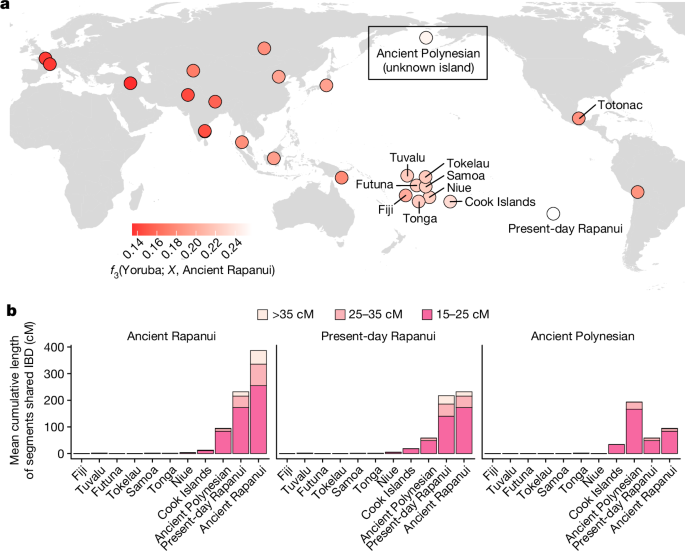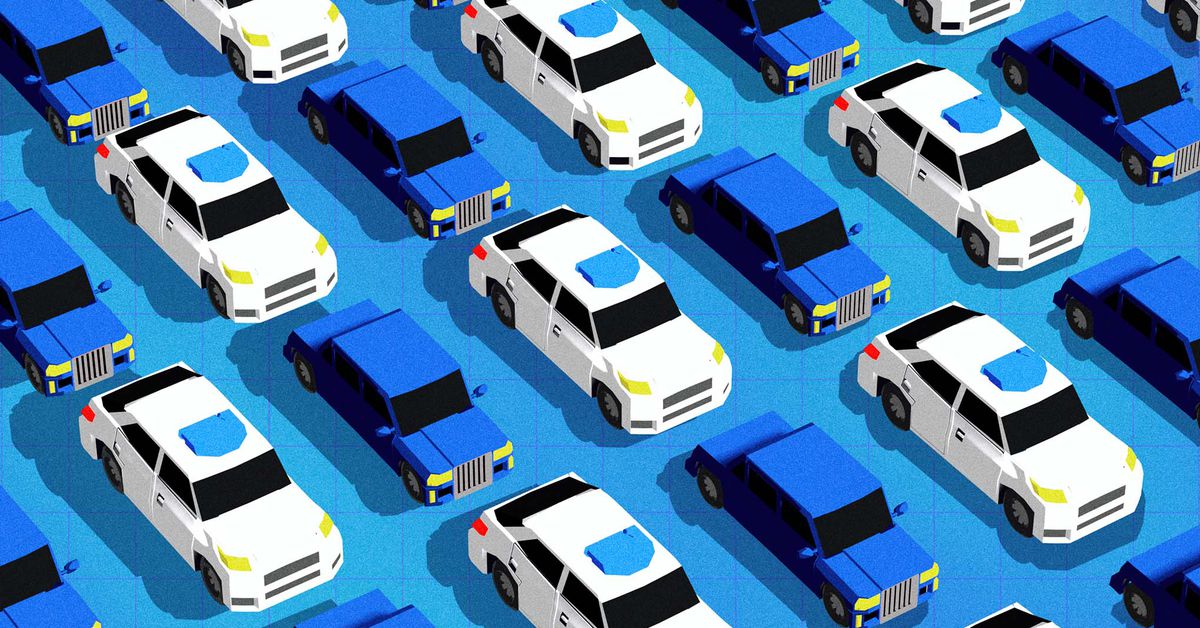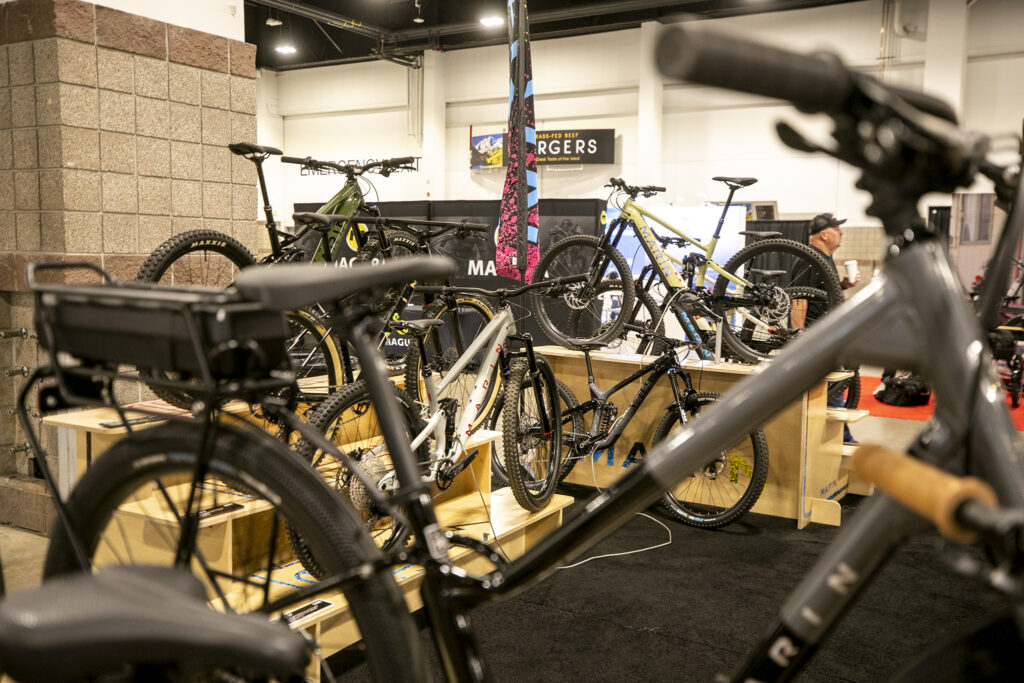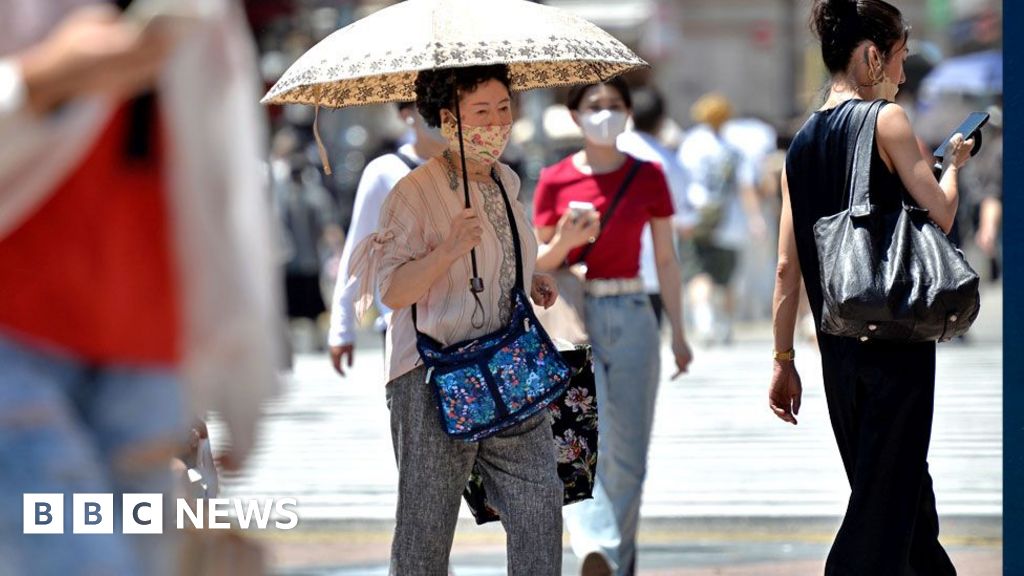alyaza [they/she]
internet gryphon. admin of Beehaw, mostly publicly interacting with people. nonbinary. they/she
- 585 Posts
- 280 Comments

 4·1 day ago
4·1 day ago

 3·10 days ago
3·10 days agothree paragraphs saying you’re wrong and that the empirical evidence supports nothing you’re saying is not a “long-winded rant” lmao–this uncritical “trust me bro it’s actually fine, you just don’t get it” stuff is the exact reason i consider autonomous vehicle stuff to 98% worthless techbro hype and autofellatio. cite your sources if you want people to listen–i have, and you’ve refuted none of it!

 5·10 days ago
5·10 days agoThe whole point of induced demand in highways is that when you add capacity in the form of lanes it induces demand. So if our highways are already full and if that capacity isn’t coming from increased EV efficiency then where is it coming from? If there’s no increase in road capacity then what is inducing demand?
just for example: “freeing up both parking lot real estate, but more importantly, freeing up on street parking, creating more room for actual traffic to move”–every single one of these posited improvements would induce demand unless you literally demolish the infrastructure (which, if you’re just switching people one-to-one from regular cars to automated cars is not going to happen, because the number of cars will remain a constant). the existence of unused parking begets driving and is a predictor for more driving.[1] the existence of more space to move obviously begets more driving because the “highways” aren’t “full” anymore; and again, if it didn’t that would actually be worse because it incentivizes less safe driving practices.
You are describing how humans drive, not AVs. AVs always obey the speed limit and traffic calming signs.
if by AVs you mean “fully autonomous” ones that literally do not exist currently then sure–they better! but at that point nothing you say is meaningful, because the technology literally doesn’t exist. we might as well be talking about mass-adopted hydrogen cars or whatever.
but, if we mean semi-autonomous ones—the ones that clearly exist, and which companies advertise as autonomous, and which people actually use—no. absolutely not. these things routinely violate even the most obvious traffic laws and necessitate humans to intervene in their ordinary function. Waymo hits pedestrians even now, and it’s ostensibly one of the most advanced semi-autonomous programs in the world. Uber literally killed a pedestrian and got into legal trouble over it. Tesla’s problems are omnipresent to the point where the NHTSA has said their feature is unsafe in practice and people make it a punchline. you can’t no-true-Scotsman this technology. even in the best and least ambiguous traffic circumstances it has obvious problems!
↩︎In 2015, a group of researchers led by Chris McCahill looked at historical trends in parking supply and commuter behavior for nine cities: Albany, New York; Berkeley, California; the Washington, DC, suburbs of Arlington, Virginia, and Silver Spring, Maryland; Cambridge, Lowell, and Somerville, Massachusetts; and Hartford and New Haven, Connecticut. Using historical aerial photography from three dates to identify and approximate the parking supply, McCahill found that parking growth between 1960 and 1980 was a “powerful predictor” of car use in the following two decades. Every ten spaces added per one hundred residents before 1980 were linked to an 8 percent increase in the share of residents driving to work after 1980. Increase in the parking supply in the study’s first two decades was directly correlated with increases in car use in the following two decades. More parking appeared to cause more driving, not the other way around.

 6·10 days ago
6·10 days agoYes, I have no doubt there would be induced demand, but that extra demand wouldn’t be at the cost of anything.
But if AVs add more capacity to our roads, that will be entirely because they are driving more efficiently.
you are literally doing what i mean when i say you are making assumptions with no evidence. there is, again, no reason to believe that “driving more efficiently” will result from mass-adoption of automated vehicles–and even granting they do, your assumption that this wouldn’t be gobbled up by induced demand is intuitively disprovable. even the argumentation here parallels other cases where induced demand happens! “build[ing] new roads or widen[ing] existing ones” is a measure that is almost always justified by an underlying belief that we need to improve efficiency and productivity in existing traffic flows,[1] and obviously traffic flow does not improve in such cases.
but granting that you’re correct on all of that somehow: more efficiency (and less congestion) would be worse than inducing demand. “efficiency” in the case of traffic means more traffic flow at faster speeds, which is less safe for everyone—not more.[2] in general: people drive faster, more recklessly, and less attentively when you give them more space to work with (especially on open roadways with no calming measures like freeways, which are the sorts of roads autonomous vehicles seem to do best on). there is no reason to believe they would do this better in an autonomous vehicle, which if anything incentivizes many of those behaviors by giving people a false sense of security (in part because of advertising and overhyping to that end!).
You’re asking for something that does not exist. How am I supposed to provide you evidence proving what the results of mass adoption of AVs will be when there has never been a mass adoption of AVs.
you asserted these as “other secondary effects to AVs”–i’m not sure why you would do that and then be surprised when people challenge your assertion. but i’m glad we agree: these don’t exist, and they’re not benefits of mass adoption nor would they likely occur in a mass adoption scenario.
For instance, what is your reasoning for believing that AVs could never be fundamentally safer than human drivers who are frequently tired, angry, distracted, impaired, impatient, etc?
the vast majority of road safety is a product of engineering and not a product of human driving ability, what car you drive or its capabilities, or other variables of that nature. almost all of the problems with, for example, American roadways are design problems that incentivize unsafe behaviors in the first place (and as a result inform everything from the ubiquity of speeding to downstream consumer preferences in cars). to put it bluntly: you cannot and will not fix road safety through automated vehicles, doubly so with your specific touted advantages in this conversation. the road designs that create bad driving behavior don’t cease to be an issue because people switch to an automated vehicle.
take for instance “Tackling Traffic Congestion,” Transportation Quarterly 40, no. 2 (1986), which states “growing congestion [in the Bay Area] […] is the result of development that comes with an improving economy compounded by a lagging expansion of freeway and transit capacity.” ↩︎
see for instance Leonard Evans, “Future Predictions and Traffic Safety Research,” Transportation Quarterly 47, no. 1 (1993): “although congestion impedes mobility, it increases safety, as measured by serious injuries and fatalities.” and Arnold Vey, “Relationship between Daily Traffic and Accident Rates,” American City 52, no. 9 (1937), who observed that beyond a certain point congestion reduced accident rates. congestion unsurprisingly acts as a calming measure when it becomes severe enough. ↩︎

 8·10 days ago
8·10 days agoAs long as cars exist, AVs will be better than human drivers,
this is at obvious odds with the current state of self-driving technology itself–which is (as i noted in the other comment) subject to routine overhyping and also has rather minimal oversight and regulation generally. Tesla is only the most egregious example in both respects; even stuff like Waymo is pretty much entirely reliant on taking their word for it that the technology would be safer than humans (which meshes awkwardly with well publicized problems and efforts to hide robotaxi safety records).

 6·10 days ago
6·10 days agoSecondly, it’s based on the idea that people even can drive more than they already do.
they can. induced demand is omnipresent in basically all vehicular infrastructure and vehicular improvements and there’s no reason to think this would differ with autonomous vehicles
Fourthly, it ignores other secondary effects to AVs, like suddenly not needing nearly as much parking, freeing up both parking lot real estate, but more importantly, freeing up on street parking, creating more room for actual traffic to move, and their increased patience not causing constant traffic jams because they tailgated someone and then slammed on the brakes.
okay but: literally none of this follows from mass-adoption of autonomous vehicles. this is a logical leap you are making with no supporting evidence—there is, and i cannot stress this enough, no evidence that if mass-adoption occurs any of this will follow—and in general the technology is subject to far more fabulism and exaggeration (like this!) than legitimate technological advancement or improvement of society.

 1·13 days ago
1·13 days agoyou’re being way too vitriolic here, dial it back by 10.

 5·13 days ago
5·13 days agoIt’s not racist when they call him white boy, it’s racist he tells that story.
if you think calling people “white boy” is racist but the way he talks about indigenous people here isn’t you are such a fragile little cracker it’s not even funny

 18·16 days ago
18·16 days agoWhen South Korea started tackling this problem 20 years ago, it threw away 98 percent of its food waste. Today, 98 percent of food waste is turned into feed, compost or energy, according to the South Korean Ministry of Environment. It achieved this by banning food scraps from landfills and mandating that all residents separate their food waste from their trash and recycling — and to pay for the service through fees and fines.
South Korea is one of the few countries with a nationwide system for food-waste management. While France made composting food mandatory this year — and some cities like New York have imposed similar rules — few places match up with South Korea.

 4·18 days ago
4·18 days agoColorado officials are now proposing to go further. In 2023, the state adopted legislation to try something that’s never been done in this country: automatically register tribal members to vote in U.S. elections.
The program, if implemented, would enable tribes to share their membership lists with Colorado elections officials, who’d then use that information to register every eligible person to vote, while giving them a chance to opt out. Since Colorado already mails ballots to every registered voter, this would necessarily mean getting ballots into the hands of more Native people. “We’ve made real steps forward, and we’re going to continue,” Colorado Secretary of State Jena Griswold told me recently. “We always try to push the envelope.”
And yet, Cloud is also keenly concerned that the program could make her community more vulnerable. For U.S. election officials to automatically register tribal members to vote, the tribes would need to share certain vital information about their members, such as full name, address, and date of birth. Cloud is hesitant to hand this data over to a state that has, over a long history that she knows too well, been an agent of violence.

 4·21 days ago
4·21 days agothere are definitely better, more substantive articles that can make all of the points this one is; accordingly, this will be removed. you’re free to find another article which makes this point though since it’s likely a conversation people want to have on here

 6·27 days ago
6·27 days agoThe rate of stops conducted off-the-books has increased under Superintendent Larry Snelling, even as he has positioned himself as an agent of reform who is moving the Chicago Police Department away from its longstanding strategy of using traffic stops to find illegal guns and tamp down on crime. In June, Snelling reported traffic stops were down by about 87,000 over the same time last year. But behind that reduction is a pattern of thousands of unreported police encounters, which accounted for one-third of all traffic stops over the first seven months of Snelling’s tenure.
Records obtained by Bolts and Injustice Watch show police department officials know the traffic stop data they report to state regulators are an undercount. Internally, the department tracks stops using police radio data that doesn’t rely on officers filling out the state-mandated forms.

 9·28 days ago
9·28 days agoMayoral candidate Victor Miller, a bespectacled librarian with an AI obsession, stood between an American flag and a Wyoming flag, preaching what he sees as the untapped potential of artificial intelligence in government.
Miller made this pitch at a county library in Wyoming’s capital on a recent summer Friday, with a few friends and family filling otherwise empty rows of chairs. Before the sparse audience, he vowed to run the city of Cheyenne exclusively with an AI bot he calls “VIC” for “Virtual Integrated Citizen.”
AI experts say the pledge is a first for U.S. campaigns and marks a new front in the rapid emergence of the technology. Its implications have stoked alarm among officials and even tech companies.

 9·1 month ago
9·1 month agoI am not understanding what you want from me
i think the basic confusion people are having is that, when you phrase it like “I use it/its in spaces where I do not plan on engaging with people as individuals” and “This space is not a chat room and there is no reason to treat it as such. It is a forum.”, how that comes off to some people is you are kind of treating this place like a dumping ground for what you want to talk about and then ignoring other people jumping off of your posts. that may or may not be what you intend to do; so that’s why people are trying to clarify the intent of your posts.

 11·1 month ago
11·1 month agoi’m honestly not sure Trump knows anything about the FTC, and if his campaign was smart these are the kinds of things they’d propose instead of “IVF should be illegal but also you’re a degenerate for not having children”

 15·1 month ago
15·1 month agounclear (they don’t tend to announce enforcement mechanisms in these and it’s not a final rule until it’s a final rule), but it’s not like the FTC is lacking in power as an agency

 29·1 month ago
29·1 month agoAlong with prohibiting reviews written by nonhumans, the FTC’s rule also forbids companies from paying for either positive or negative reviews to falsely boost or denigrate a product. It also forbids marketers from exaggerating their own influence by, for example, paying for bots to inflate their follower count.
Violations of the rule could result in fines being issued for each violation, according to the rule. This means that for an e-commerce site with hundreds of thousands of reviews, penalties for fake or manipulated reviews could quickly add up.
i’ve been a little busy and by the time i noticed i’d missed the date again i was like “it just makes more sense to wait until Monday to keep the thread on schedule and useful”–not much sense in having one up for three days tbh

 25·1 month ago
25·1 month agoIn discussing Trump’s plan to carry out the largest deportation in US history – which the former president has called for publicly – Vought said the expulsion of millions of undocumented immigrants could help “save the country.”
Once deportations begin, “you’re really going to be winning a debate along the way about what that looks like,” Vought said. “And so that’s going to cause us to get us off of multiculturalism, just to be able to sustain and defend the deportation, right?”
In preparation for Trump’s potential return to the White House, Vought said in the meeting that he had a team of staffers working to draft regulations and executive orders that would translate Trump’s campaign speeches into government policy.
“We’ve got about 350 different documents that are regulations and things of that nature that are, we’re planning for the next administration,” he said.
For example, “you may say, ‘OK, all right, DHS, we want to have the largest deportation,’” Vought said. “What are your actual memos that a secretary sends out to do it? Like, there’s an executive order, regulations, secretarial memos. Those are the types of things that need to be thought through so you’re not, you’re not having to scramble or do that later on.”

 1·1 month ago
1·1 month agoMutual aid groups established themselves across Sudan after the war erupted. They drew members from a vibrant pro-democracy movement and brought ideas rooted in a rich heritage of social solidarity, best represented in the tradition of nafeer (“a call to mobilize”).
The Greater Khartoum kitchens follow two different models. Under the takaya system, religious and community leaders feed people on the streets, in houses, or under trees; however, more structured kitchens are run in defined spaces by the emergency response rooms.
Hassan, who helps coordinate assistance across Greater Khartoum, said over 350 communal kitchens have been set up, assisting 500,000 families with at least one meal a day. “We aim to save people’s dignity,” he said. “Everybody should be able to eat and not feel shame. We, as Sudanese, are still helping each other. We survive together.”


















